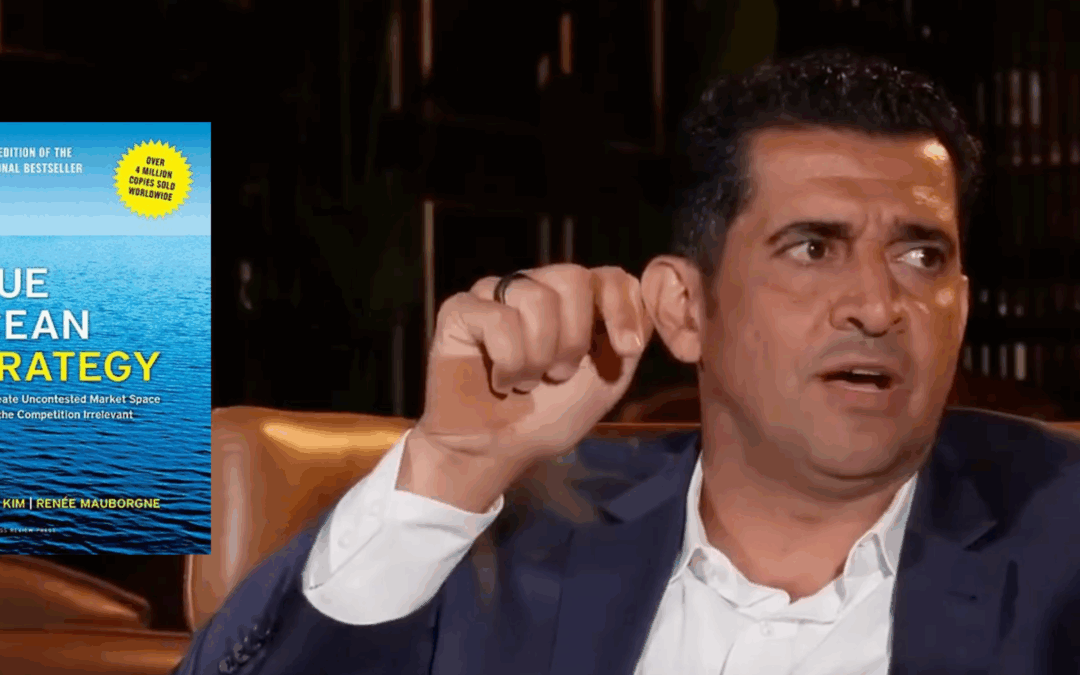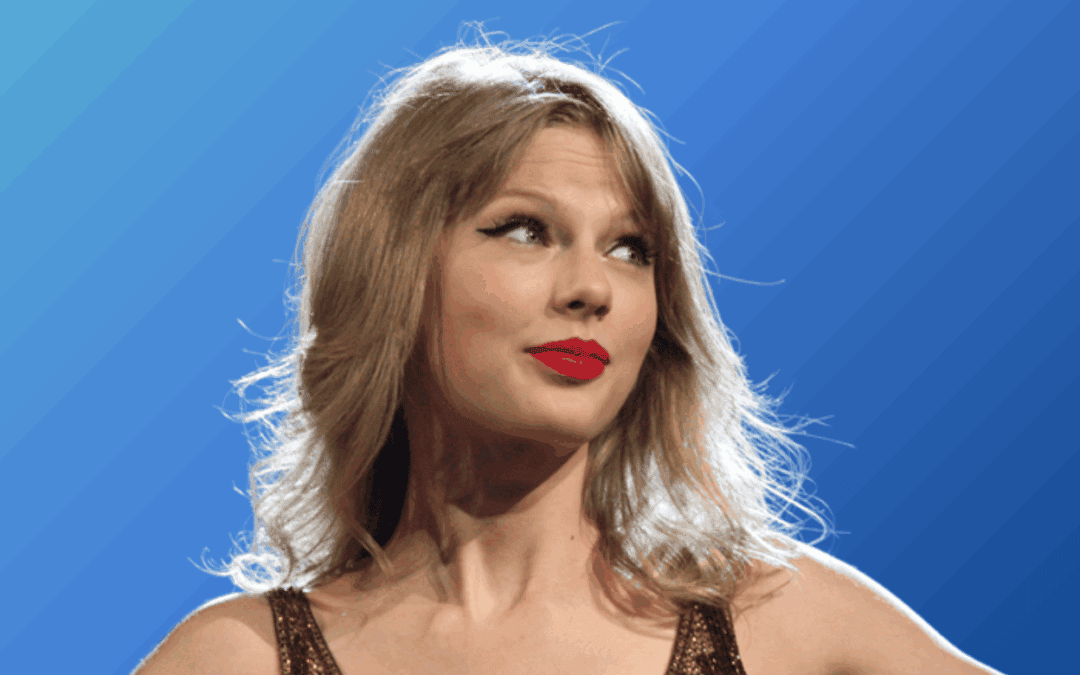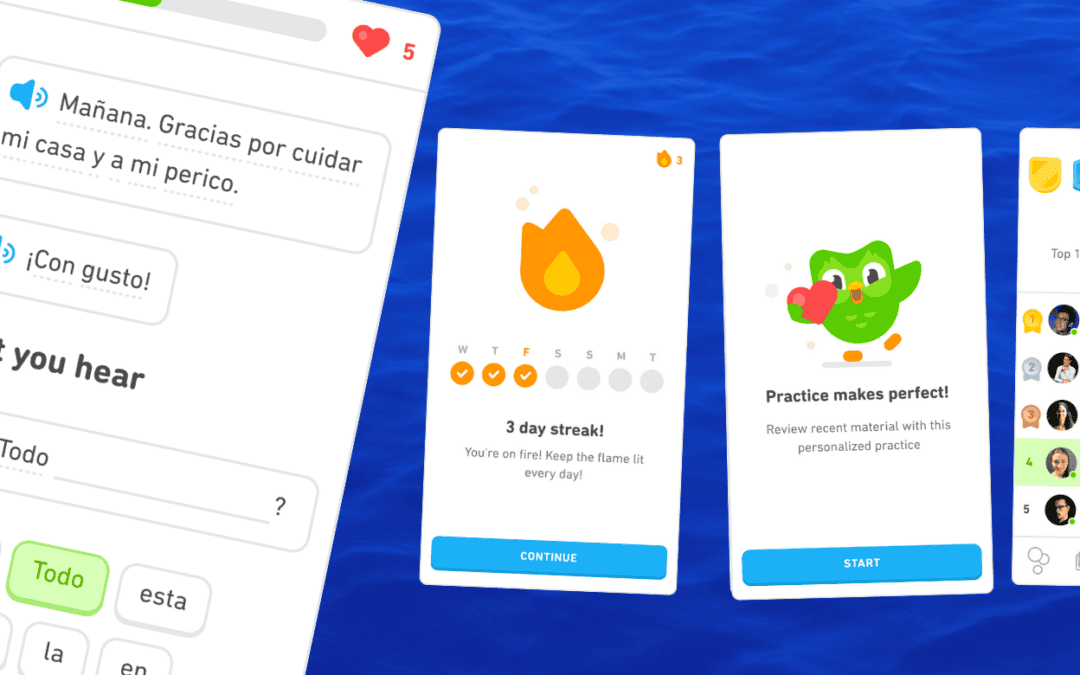Blue ocean leadership is action-based – just as strategy is. It focuses on what acts and activities leaders need to do to provide a leap in motivation and business results driven by people, and not on who they need to be. It’s the difference between being asked to be motivating versus being asked to provide those you lead with real-time feedback and best practice lessons that internally motivate and guide those you lead to up their game while feeling valued. The summation of these acts and activities is the leadership equivalent of a company’s strategic profile only here the aim is the development of a compelling leadership profile grounded in actions that are easy to observe, measure, and are directly linked to performance. This difference in emphasis has an important consequence for the time and resources needed to bring about a change for high performance. It is markedly easier to change a person’s acts and activities than their values, qualities, or behaviors. Of course, changing a leader’s activities is not a complete solution, and having the right values, behaviors, and qualities is important. But changing acts and activities is something that any individual can do, given the right feedback and guidance.
Identify hotspots and coldspots
To get started, teams are given two objectives. One is to pinpoint which of the identified key leadership acts and activities people viewed as coldspots – actions that absorb leaders’ time but add scant or negative value – and hotspots – actions that have a high positive impact on releasing employee energy and talents but currently are under-invested in by leaders or not undertaken at all. To get people to think broadly about what actions would define an effective leader, when it comes to hotspots the team probes interviewees to think beyond the bounds of the company’s leadership to the effective acts and activities of leaders outside the organization that could have a strong positive impact
To get people to think broadly about what actions would define an effective leader, when it comes to hotspots the team probes interviewees to think beyond the bounds of the company’s leadership to the effective acts and activities of leaders outside the organization that could have a strong positive impact at their company. Most of us have encountered people in our lives who have exerted a disproportionate influence on us. It could be a schoolteacher, a sports coach, a scoutmaster, a music teacher, a grandparent or a former boss. Whatever the alternative is, it is important to understand what specific acts and activities they undertook that the interviewee believed would add real value to them if their leader undertook the same action.
Apply the Blue Ocean Leadership Grid
To accomplish the above two objectives, the complementary analytic tool, the Blue Ocean Leadership (BOL) Grid, is introduced into the process (See Exhibit 1). At this step, the interview results on coldspots and hotspots are factored into the Grid for a given leadership level.
For instance, the coldspot actions that leaders invested time in that people overwhelmingly viewed as irritating or demotivating or unproductive get sorted into the eliminate or reduce quadrant depending on their severity. The teams were reminded that central to blue ocean leadership is eliminating and reducing these low value or no value leader acts and activities. This is fundamental in creating the time and space in which leaders can attempt to up their game, hence producing a simultaneous win for the leaders (lower stress and more time to lead), employees, and customers. Without this, a step-change in leadership strength will remain largely wishful thinking given leaders’ already full plates.
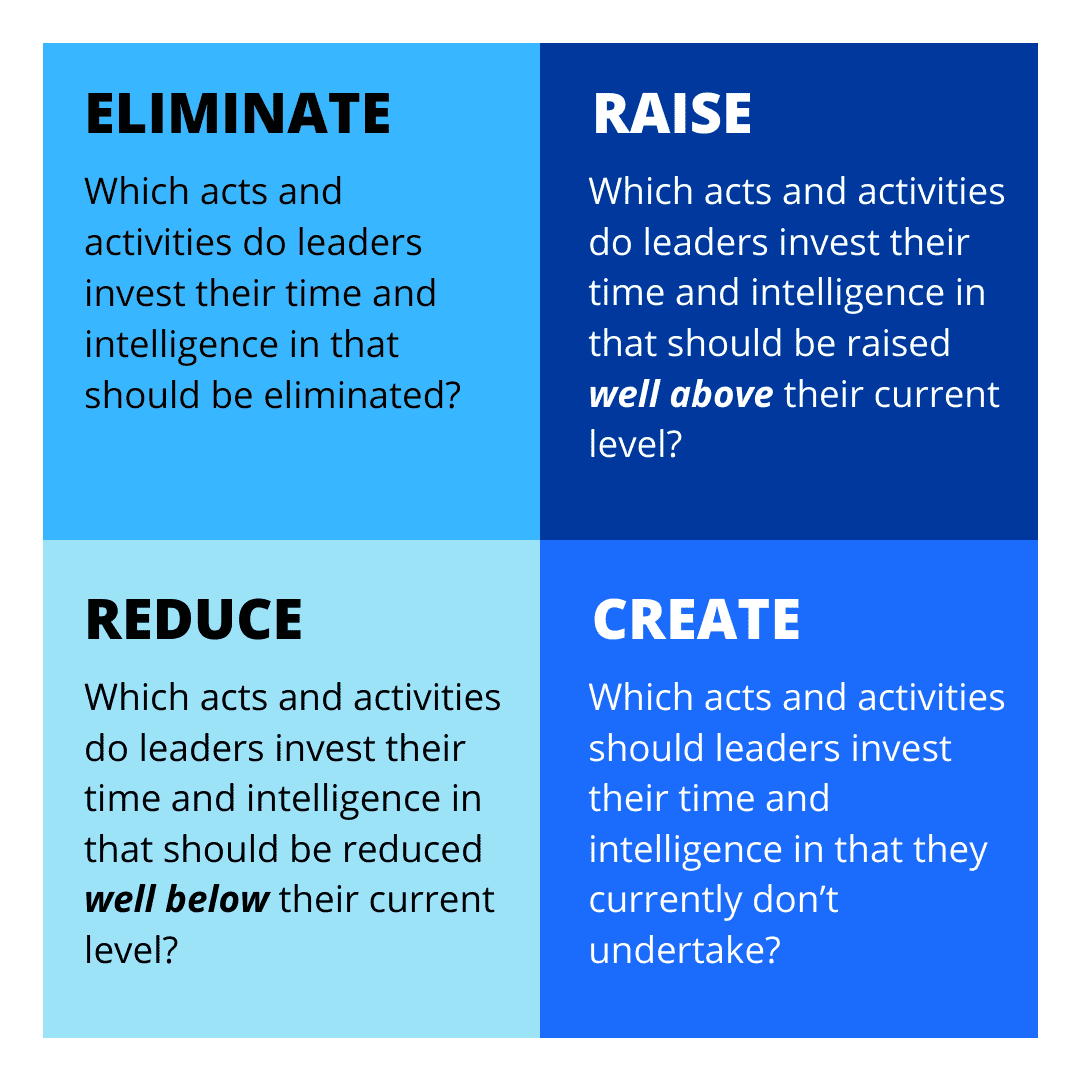
© Chan Kim & Renée Mauborgne. All rights reserved.
As the teams sort the coldspot actions into the eliminate and reduce quadrants, positive energy grows in the teams because they can see immediately how this could have a step-change in the organization’s performance and make people happier right away. Clearing leaders’ agendas through eliminating and reducing is a powerful consequence of adopting blue ocean thinking to Leadership Profiles. In addition, the teams need to be mindful that to go beyond just attending to today’s leadership issues and to transform the performance of their organization, the To-Be Leadership Canvases should include the leadership factors people thought were hotspots that were drawn from the acts and activities of leaders outside the company or at levels other than their own.
Develop alternative To-Be Leadership Profiles
With this input and the completed BOL Grids, the three teams are then charged with creating from two to four Leadership Canvases for a given leadership level with each depicting a leadership profile that they believe would be far better able to drive a large increase in organization performance and unlock new leadership space. By demanding two to four Leadership Canvases per level, team members are forced to think deeply about leadership and are able to present alternate variations of Leadership Profiles that respond to dominant points made by buyers and users of leadership in the company. The teams usually take two to three weeks of drawing and redrawing their leadership canvases. Again for small organizations, they may only have one level of leadership and hence may only need to develop alternative leadership profiles for that level.
Move on to step three – the ‘Leadership Fair’
After the alternative To-Be Leadership Canvases are developed, organizations are ready to move on to step three of the process. Here the teams present their Leadership Canvases at what we call the ‘Leadership Fair.’ Besides senior management, attendees to the fair include a representative slice of board members, along with middle and frontline leaders as well. The fair starts with the overall team describing the process they went through and the As-Is Leadership Canvases that became apparent for the three levels in the first step of the process. In these three simple pictures, the team establishes why change is necessary, confirms that people’s comments at all levels were listened to and registered and hence they were valued, and sets the context against which the To-Be Leadership Profiles can be understood and appreciated. While, as in
In these three simple pictures, the team establishes why change is necessary, confirms that people’s comments at all levels were listened to and registered and hence they were valued, and sets the context against which the To-Be Leadership Profiles can be understood and appreciated. While, as in the case of BRG, the As-Is Leadership Canvases often present a sobering reality, because the As-Is Leadership Profiles reflect the dominant acts and activities of all leaders at a level, not of particular leaders, not only does defensiveness go down as openness goes up, but a kind of we’re all in this together spirit of collective responsibility for change is born.
Present the To-Be Leadership Profiles
Having set the stage, the teams then move on to present the To-Be Leadership Profiles to unlock new leadership space and a step-change in leadership performance. Typically, the team that focused on frontline leaders presents their corresponding Leadership Canvases first. The pictures are hung on the walls so the audience can easily see them. After the To-Be Leadership Profiles are presented, the invited attendees are each given three post-it notes and told to put one next to their favorites or up to all three on a single canvas if they found it that compelling. After everyone has voted, the senior team probes attendees on why they voted as they did. Once completed the same process is then repeated for the two other leadership levels. It is useful to deal with each leadership level separately in terms of presentation and voting for the practicality of memory recall.
Have top management select the To-Be Leadership Profiles to move forward on
The eventual outcome after about four hours of the Leadership Fair is that the senior team has before them a clear picture of the current Leadership Profiles of each level, the completed BOL Grids of what leadership acts and activities buyers and users of leadership at each level believe should be eliminated, reduced, raised and created, and a selection of To-Be Leadership Profiles to create a step-change in leadership performance. Armed with this information and the votes and comments of attendees, top management is charged with both reaching a decision on which To-Be Leadership Profile at each level the organization will move forward on and explaining why they reached this decision to demonstrate the credibility of their selection. Another major reason why implementation is already being sown here is that the whole meeting is all part of an overall fair process approach where the decision taken on the Leadership Profiles going forward is the result of exposition, voting, feedback, and executive selection and explanation of their eventual choices. At BRG, voting was done by 125 plus people.
Armed with this information and the votes and comments of attendees, top management is charged with both reaching a decision on which To-Be Leadership Profile at each level the organization will move forward on and explaining why they reached this decision to demonstrate the credibility of their selection. Another major reason why implementation is already being sown here is that the whole meeting is all part of an overall fair process approach where the decision taken on the Leadership Profiles going forward is the result of exposition, voting, feedback, and executive selection and explanation of their eventual choices. At BRG, voting was done by 125 plus people.
In the case of BRG, the three To-Be Leadership Profiles selected felt like a breath of fresh air to almost everyone at the fair. See Exhibit 2, “The To-Be Leadership Canvases of BRG.” As shown in the exhibit, the tagline for frontline leaders’ to-be Leadership Profile was refreshingly “Cut through the cr*p” which was later gentrified to “Cut through to serve customers.” Here frontline leaders were at last freed from deferring the vast majority of customer queries to middle management and worrying about how to please middle managers by investing their time in satisfying processes and reporting requests. Their actions and time were now freed and redirected to training call center personnel on how to effectively deliver on company promises on the spot, resolve customer problems, make fast and effective decisions for customers in distress, and make meaningful cross-sales – leadership actions that excited call center personnel, were sure to excite customers, and would directly drive the company’s bottom line.

© Chan Kim & Renée Mauborgne. All rights reserved.
In terms of middle management’s to-be leadership profile, it was given the tagline “Liberate, coach and empower.” Here middle management’s time and attention were to essentially shift from controlling to supporting. This included eliminating a range of organizational blockages and low value-added reporting processes that kept frontline leaders at their desks instead of being on the floor coaching call center people on everything that mattered to customer happiness and business success. Previously, the middle was perceived as looking for errors in what the frontline did and silencing or squelching any frontline manager attempting to do anything other than follow the book. Now that was changed. The To-Be Leadership Profile also included new actions like bringing frontline leaders together to share best practices and learn so they could be more effective. Their job was now understood to manage and integrate the collective knowledge of frontline leaders and their staff to solve important organizational problems. Instead of controlling, and forcing compliance to rulebooks and processes, they were to provide face-to-face coaching and ongoing feedback. To reinforce this, middle management was given responsibility for performance, not control, of frontline leaders.
Previously, the middle was perceived as looking for errors in what the frontline did and silencing or squelching any frontline manager attempting to do anything other than follow the book. Now that was changed. The To-Be Leadership Profile also included new actions like bringing frontline leaders together to share best practices and learn so they could be more effective. Their job was now understood to manage and integrate the collective knowledge of frontline leaders and their staff to solve important organizational problems. Instead of controlling, and forcing compliance to rulebooks and processes, they were to provide face-to-face coaching and ongoing feedback. To reinforce this, middle management was given responsibility for performance, not control, of frontline leaders.

© Chan Kim & Renée Mauborgne. All rights reserved.
The tagline for the To-Be Leadership Profile of senior management was “Delegate and chart the company’s future.” With the leadership actions of frontline and middle managers reset, the To-Be Leadership Profile now allowed senior management to clear a significant portion of its agenda of everyday issues to think about the big picture and all the changes in the industry and what this meant to the firm’s strategy and the organizational capabilities it needed to develop to position the firm for continued success. The fast-paced, changing business landscape made careful strategic thinking more important as the past was no longer a linear projection to the future. It also required less time on solving problems and putting out fires and more time to think about which problems to solve, map strategies, develop consensus on major strategic shifts, and develop talent, which is what the to-be leadership profile provided for.
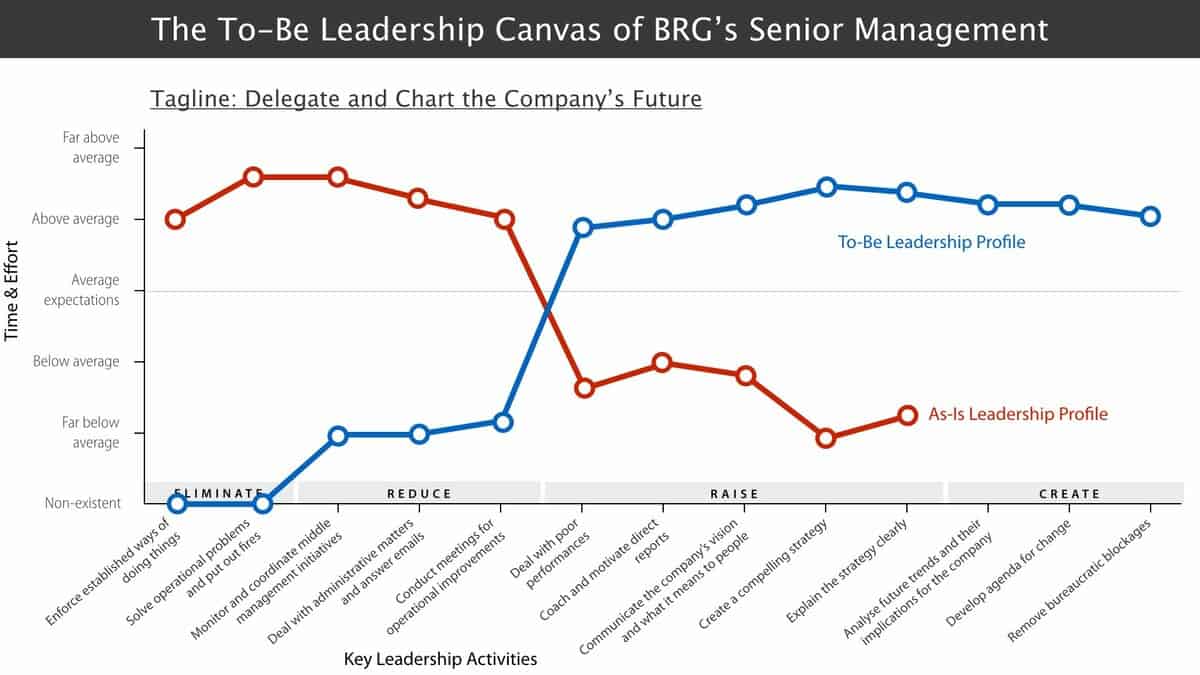
© Chan Kim & Renée Mauborgne. All rights reserved.
The board members that attended the Leadership Fair felt strongly that the To-Be Leadership Profiles were in agreement with the interests of customers and would best serve shareholders’ profit and growth objectives as well. The frontline leaders were enthused and ready to charge, and almost felt like they were given a new lease on life. Middle managers shifted from micromanaging, which is a common tendency for that level, to continuously renewing the core functioning of the organization. Senior management went from feeling towed under the ocean by all the middle management affairs they had to coordinate and attend to, to feeling like they could finally get their heads above water and could see the beauty of the ocean they had to chart.
After the Fair is over, the organization is ready to move into the last step of the blue ocean leadership process. This last step, “Institutionalise Your New Leadership Profiles“, is the subject of the last article in this series.
To find out more check out our frequently asked questions on Blue Ocean Leadership.


